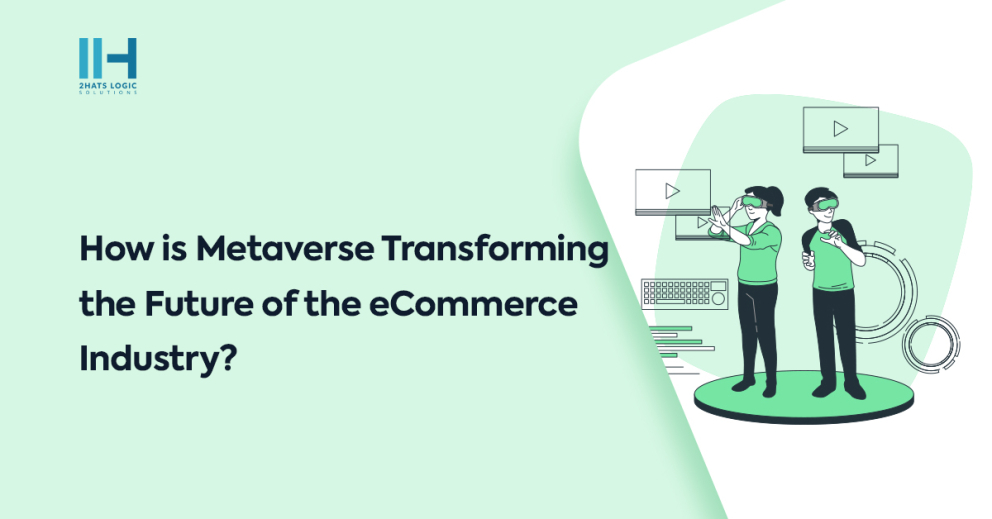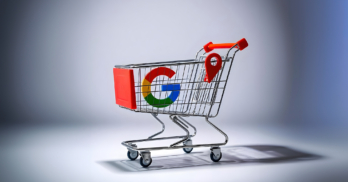Greetings! I'm Aneesh Sreedharan, CEO of 2Hats Logic Solutions. At 2Hats Logic Solutions, we are dedicated to providing technical expertise and resolving your concerns in the world of technology. Our blog page serves as a resource where we share insights and experiences, offering valuable perspectives on your queries.

In this digital world, there is a concept that has been capturing the imagination of both consumers and businesses alike: the Metaverse. Imagine a digital world where virtual and augmented reality merge to create immersive experiences beyond the confines of the physical world. This is the Metaverse—a transformative force reshaping the future of eCommerce as we know it.
What is the Metaverse?
Metaverse encompasses virtual environments where users can engage with each other and digital content in real-time, blurring the lines between the physical and digital realms. From virtual social gatherings to immersive gaming experiences, the Metaverse offers endless possibilities for exploration and interaction.
Features of Metaverse in ecommerce
The integration of the metaverse into ecommerce platforms introduces a new dimension to online shopping. Let’s take a look at the features below
Virtual Storefronts
Traditional eCommerce platforms are evolving into immersive virtual storefronts within the metaverse. This allows customers to browse and shop in a more engaging and interactive environment.
Enhanced Product Visualization
In the metaverse, customers can experience products in virtual reality, enabling them to visualize items more realistically before making a purchase decision. This enhances the online shopping experience and reduces the likelihood of returns.
Social Shopping Experiences
The metaverse facilitates social interactions while shopping. This allows users to explore products together, share recommendations, and make purchases in real-time with friends and influencers.
Personalized Avatars and Virtual Try-Ons
Users can create personalized avatars that reflect their style and preferences, and try on virtual versions of clothing and accessories to see how they look before buying, improving the accuracy of online shopping.
Virtual Events and Experiences
eCommerce brands can host virtual events, such as fashion shows or product launches, within the metaverse. This provides customers with unique and immersive experiences that drive engagement and sales.
Blockchain-Based Transactions
The metaverse uses blockchain technology for secure and transparent transactions, enabling seamless payments and authenticating the provenance of goods, which is especially crucial for luxury items and collectables.
Augmented Reality Fitting Rooms
AR technology in the metaverse allows customers to virtually try on clothing and accessories in real-time using their smartphone or AR glasses, enhancing the convenience of online shopping.
Dynamic Virtual Marketplaces
The metaverse hosts dynamic virtual marketplaces where users can discover new things online. This can be brands and products, participating in auctions, and engaging in peer-to-peer transactions, fostering a vibrant and diverse eCommerce ecosystem.
Cross-Platform Accessibility
The metaverse is accessible across various devices, including smartphones, tablets, PCs, and VR headsets. This ensures that customers can shop anytime, anywhere, and on any device.
User-Generated Content and Reviews
Customers can contribute user-generated content and reviews within the metaverse. By sharing shopping experiences and influencing purchasing decisions, thereby fostering trust and authenticity in eCommerce transactions.
Challenges and Considerations
While the potential of the Metaverse for eCommerce is vast, it also poses challenges and considerations for businesses to navigate. Data privacy concerns, technological barriers, and the need for robust cybersecurity measures are just a few of the challenges businesses must address when venturing into the Metaverse. However, with careful planning and strategic investment, these challenges can be overcome, paving the way for a new era of digital commerce.
Future Trends and Opportunities of Metaverse in E-commerce
Here are the future trends and opportunities of the metaverse in eCommerce:
1. Decentralized Virtual Marketplaces
With the integration of blockchain technology, eCommerce platforms can create decentralized virtual marketplaces where users can buy, sell, and trade goods securely without the need for intermediaries. These marketplaces offer increased transparency, lower transaction costs, and greater control over assets for both buyers and sellers.
2. Hyper-Realistic Virtual Try-On Experiences
Advancements in virtual reality (VR) and augmented reality (AR) technologies enable hyper-realistic virtual try-on experiences, allowing customers to virtually try on clothing, accessories, and cosmetics with unprecedented accuracy. This immersive shopping experience enhances confidence in online purchases and reduces returns, driving sales for eCommerce businesses.
3. AI-Powered Personalization
Artificial intelligence (AI) algorithms analyze vast amounts of customer data to personalize the shopping experience. From recommending products based on browsing history to providing tailored styling advice, AI-powered personalization enhances customer engagement and conversion rates for eCommerce retailers.
4. Integrated Social Commerce Features
The metaverse blurs the lines between social media and eCommerce by integrating social commerce features directly into virtual environments. Users can discover, share, and purchase products seamlessly within social interactions, driving word-of-mouth marketing and increasing sales for eCommerce brands.
5. Virtual Events and Experiential Marketing
eCommerce brands leverage the immersive nature to host virtual events and experiential marketing campaigns. From virtual fashion shows to interactive product launches, these events create memorable experiences that engage customers and foster brand loyalty, ultimately driving sales and brand awareness.
6. NFT-Based Collectibles and Limited Editions
Non-fungible tokens (NFTs) enable eCommerce businesses to create and sell digital collectables, limited editions, and virtual assets within the metaverse. These unique digital items offer scarcity and exclusivity, appealing to collectors and enthusiasts who are willing to pay premium prices, thus creating new revenue streams for eCommerce brands.
7. Cross-Platform Accessibility and Interoperability
The metaverse offers cross-platform accessibility, allowing users to access virtual environments and eCommerce experiences across different devices and platforms seamlessly. This interoperability enhances the reach and accessibility of eCommerce businesses, ensuring that customers can engage with brands anytime, anywhere.
8. Gamification of Shopping Experiences
Gamification elements are integrated into eCommerce experiences within the metaverse, making shopping more engaging and entertaining. From gamified loyalty programs to interactive shopping challenges, these gamification strategies incentivize customer participation and increase customer retention and sales.
Conclusion
In conclusion, the Metaverse represents a paradigm shift in the way we experience and interact with digital content, including eCommerce. By leveraging the opportunities the Metaverse presents, businesses can revolutionize e-commerce development, creating immersive shopping experiences and fostering stronger connections with customers. This integration opens up new avenues for growth and innovation in the digital economy, propelling e-commerce development to unprecedented heights. As we navigate this brave new world of virtual reality, one thing is clear: the future of e-commerce development has never looked more exciting.
What exactly is the Metaverse?
The Metaverse is a digital realm where virtual and augmented reality merge, allowing users to interact with each other and digital content in real time. In the context of eCommerce, the Metaverse is transforming online shopping by providing immersive experiences such as virtual storefronts, enhanced product visualization, and social interactions.
How can the Metaverse benefit eCommerce businesses?
Metaverse benefits eCommerce businesses by offering immersive experiences like virtual storefronts, enhanced product visualisation, social shopping interactions, and decentralized virtual marketplaces. These features improve customer engagement, drive sales, and unlock new avenues for growth and innovation in the digital economy.
What are some challenges businesses face when implementing Metaverse technology for eCommerce?
Challenges include data privacy concerns, technological barriers, and the need for robust cybersecurity measures.
How can eCommerce businesses leverage the Metaverse to drive sales and growth?
Businesses can leverage trends like decentralized virtual marketplaces, AI-powered personalization, and virtual events/experiential marketing to engage customers and create unique shopping experiences.
What role does blockchain technology play in the Metaverse and its impact on eCommerce?
Blockchain technology enables secure transactions, authenticating goods' provenance and creating decentralized virtual marketplaces, enhancing trust and transparency in eCommerce transactions.

Related Articles









